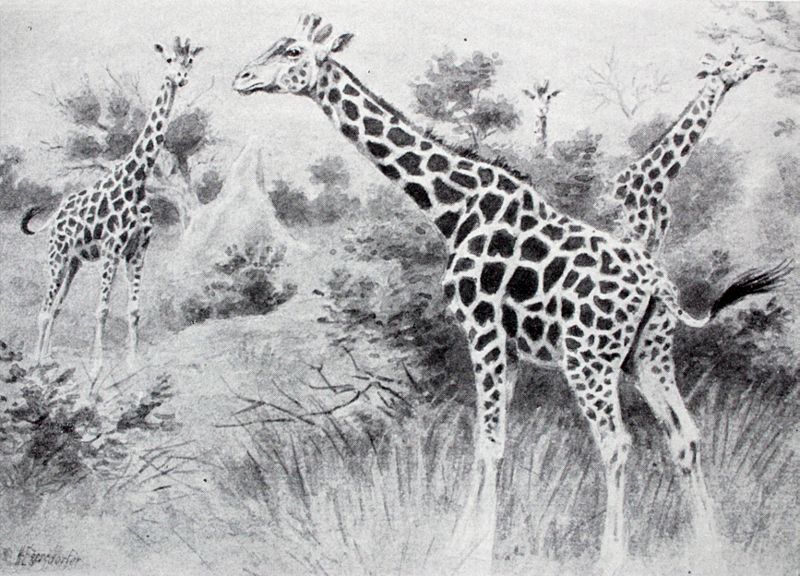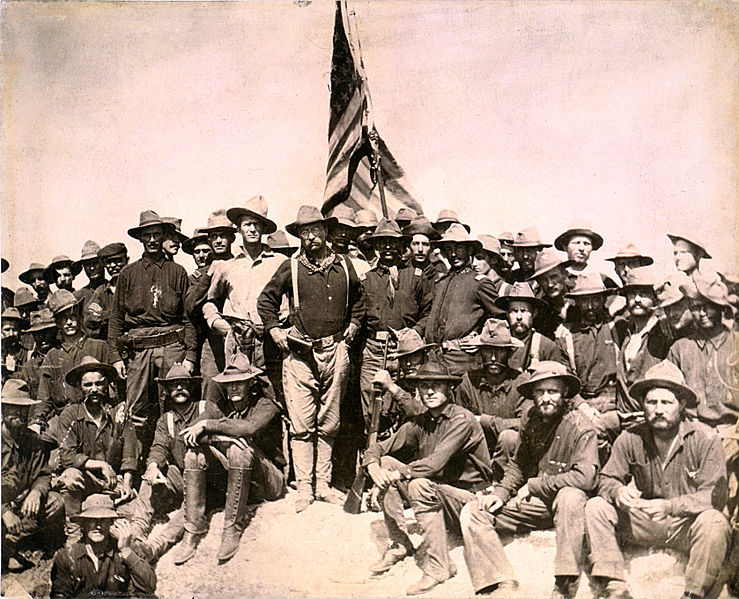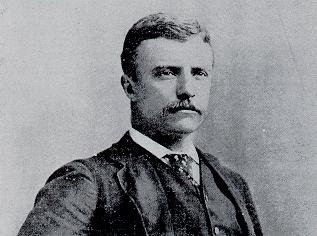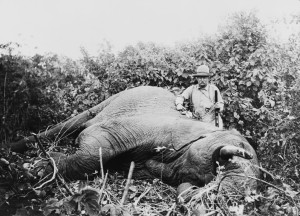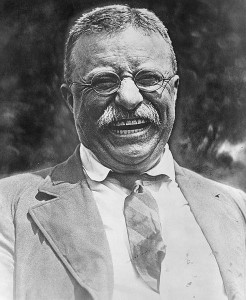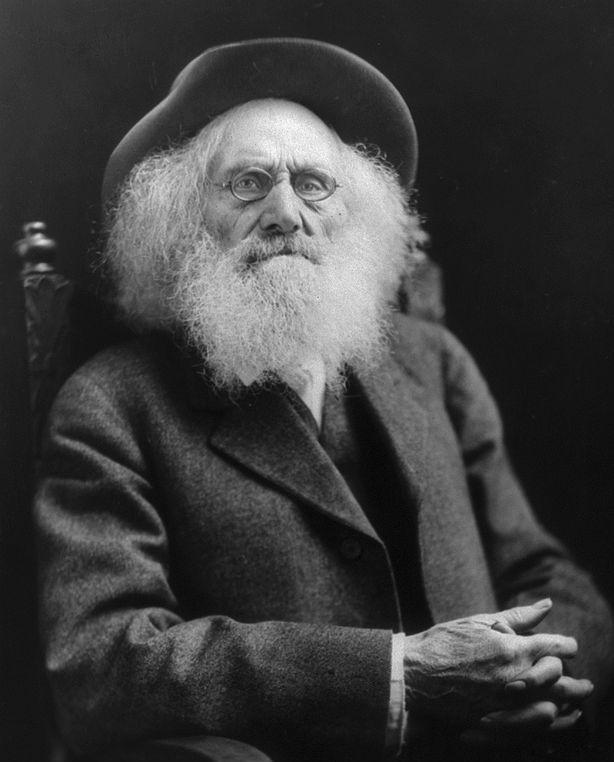
Evan Meeker, 1921.

Showing his wagon to President Theodore Roosevelt, 1908.
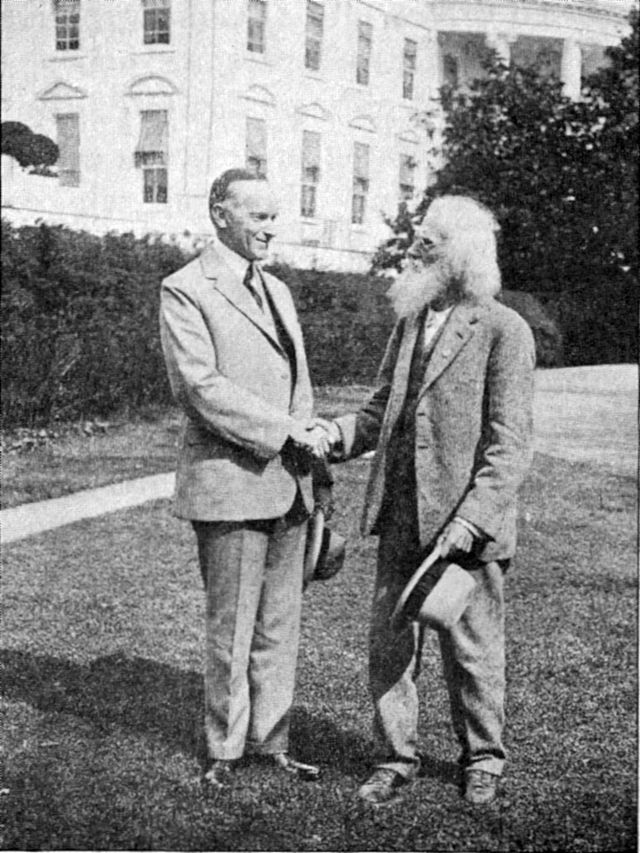
Meeting President Calvin Coolidge, 1924.
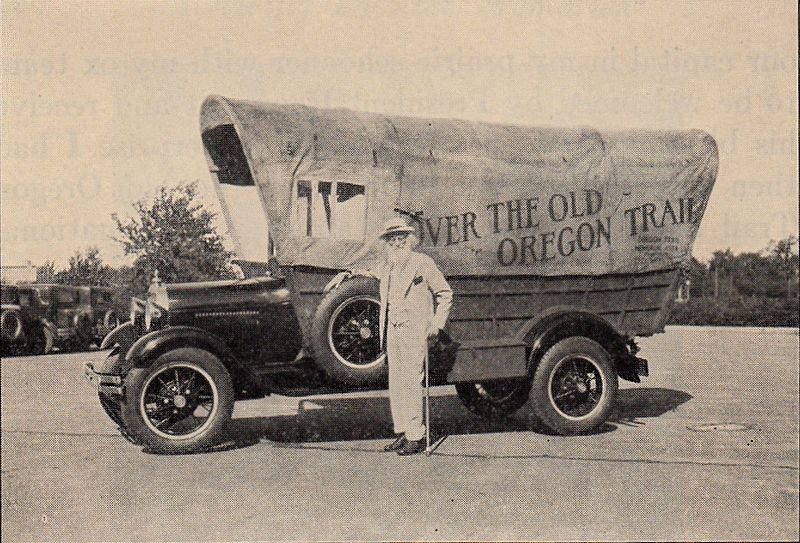
Evan Meeker, Detroit, 1928, last photo.
When Ezra Meeker passed away 86 years ago, he took with him a lot of institutional memory–and the institution was America. A pioneer who traveled the Oregon trail in his youth, he spent much of his dotage trying to ensure people would remember those who endured such treacherous crossings to open up the country. The article that announced his death in the December 3, 1928 Brooklyn Daily Eagle:
“Seattle, Wash.–Ezra Meeker, 97, one of the last of the pioneers of the covered wagon era, died here this morning of after an illness of several months.
Meeker clung tenaciously to life until the end, holding on by sheer will power after physicians and relatives had given up. He had been at the point of death in a Detroit hospital for two months before returning here eight weeks ago. He had grown gradually weaker and when his condition became alarming it was impossible to move him to a hospital.
Last Thursday the pioneer was reported to have shown great improvement and hopes were held momentarily by his doctors that he would recover and live to reach his 98th birthday this month. He was in fine spirits over the weekend and his pulse and temperature were about normal. Late yesterday there was a turn for the worse and he sank rapidly.
Meeker was bitterly disappointed because illness in Detroit had prevented him from returning here in time to register for the recent general election. It was the first time he had missed since he voted in the first territorial election in Washington in 1854.
The pioneer, who brought his bride and a seven-weeks-old child West over the old Oregon trail by ox team in 1852, had intended to begin a second automobile tour of the trail when he was forced to enter the Detroit hospital in the first serious illness of his long and eventful life.
A son, Marvin J. Meeker, and three daughters, Mrs. Carrie Osborne and Mrs. Ella Templeton of Seattle, and Mrs. Roderick McDonald of Peshastin, Wash., survive him.
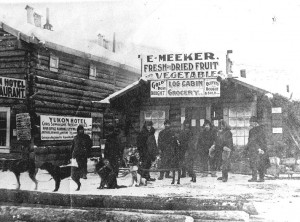 Meeker was born at Huntsville, Ohio, on December 29, 1830. After a boyhood there and an apprenticeship in a printing office in Indianapolis, her married in 1851 and struck out by ox team for Iowa to homestead a farm. A severe winter there induced the young couple to join a wagon caravan for Oregon and California in 1852. Months of hardship behind them, the Meekers reached Portland, Ore., in October of that year. Trail instinct kept the Meekers on the move until they settled at Fort Steilacoom, south of the present site of Tacoma, where Meeker kept a store from 1853 to 1862. Then the Meekers moved to Puyallup, where the pioneer became interested in hop growing, later going to London, England, for four years as agent of the hop growers of the Pacific Northwest.
Meeker was born at Huntsville, Ohio, on December 29, 1830. After a boyhood there and an apprenticeship in a printing office in Indianapolis, her married in 1851 and struck out by ox team for Iowa to homestead a farm. A severe winter there induced the young couple to join a wagon caravan for Oregon and California in 1852. Months of hardship behind them, the Meekers reached Portland, Ore., in October of that year. Trail instinct kept the Meekers on the move until they settled at Fort Steilacoom, south of the present site of Tacoma, where Meeker kept a store from 1853 to 1862. Then the Meekers moved to Puyallup, where the pioneer became interested in hop growing, later going to London, England, for four years as agent of the hop growers of the Pacific Northwest.
Meeker was the author of several books on pioneer life, although he had but four months schooling in his life.
Meeker retraced the Oregon trail with an ox team in 1906 and four years ago flew over the route in an airplane piloted by Lieut. Oakley G. Kelley.
His last years were spent in obtaining recognition of the heroism of the Oregon trail pioneers by inducing communities along the route to erect suitable markers. In 1926 President Coolidge signed an act authorizing the issuance of a special half dollar to further interest in the building of monuments along the trail. Meeker was received at the White House by both Mr. Coolidge and President Roosevelt.”


